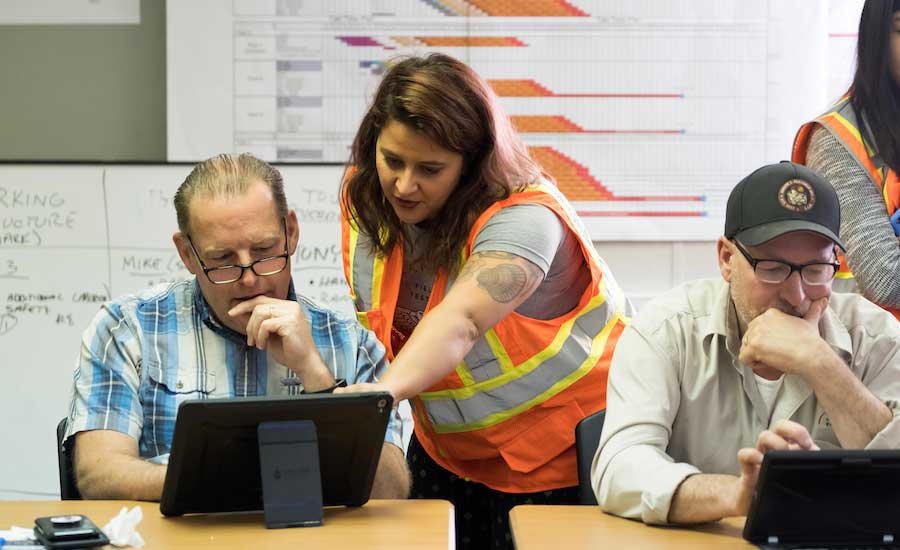In a move to keep up with the times, the National Electrical Contractors Association (NECA) recently revamped its apprenticeship training program to include modern project management software that is becoming ubiquitous on today's construction sites.
"In our area of the country, electronic documentation is becoming the predominant method of construction, so we want to be sure that our apprentices coming out of the program have all the necessary skills to continue that trend," says Rod Belisle, Director at NECA-IBEW (International Brotherhood of Electrical Workers) Electrical Training Center in Portland, Ore. "We are also offering our new technology-focused curriculum to journeyman who are being incorporated into a crew, handed an iPad and aren't familiar with what that next step is."
NECA's training center currently have a membership of more than 5,000. Under its rules, a five-year apprenticeship program is required to obtain a license, and every worker has to take 24 hours of continuing education classes every three years to maintain that license. It has been 20 years since the training program has undergone such a significant overhaul. One new inclusion is training in PlanGrid, the mobile-based electronic documentation and collaboration platform used on construction sites.
"We've been working on the concept since January," says Belisle. "We started integrating BIM into our apprenticeship program and also offering it to journeymen. Once we got the modeling software into the classroom, it felt like the next natural thing to do was to take other parts of the curriculum that are based on paper blueprints and slowly transition them to electronic documentation."
When asked about the catalyst for the revamp, Belisle elaborated. "We watch market trends and deal with our contractors directly, and many of them are large contractors who perform high-tech work. So we surveyed the NECA membership, and they pointed us to PlanGrid, a fairly standardized platform that many of them were using or were considering using. We then spoke to the NECA members using PlanGrid to find out their satisfaction level and whether the technology met the mark for stepping into that market. They reported that it was pretty easy for crews to use right out of the gate."
"Subcontractors carry a majority of the labor costs in the industry and as the workforce continues to age—nationally, the average age is in the mid-40s—subs in all trades are turning towards technology to bring onboard the next generation of workers," says Tracy Young, CEO of PlanGrid. "Trade organizations like NECA can help construction workers become more competitive in the overall job market by upping their skills with technology that is increasingly used on jobsites."
One large NECA member now using PlanGrid is Bismark, N.D.-based MDU Construction Services Group. With a reported 2017 revenue of $1.35 billion and a nationwide footprint, the contractor reports longer delays in hiring, citing difficulty in finding the right people with the right skills.
"We used to experience labor shortages in just one to two markets, but now we experience it in most markets," says Jeff Thiede, president and CEO of MDU. "We are trying to get the word out about opportunities in the trades. We have had a number of smart people be successful in the trades, but the opportunities provided by trades isn't being broadcast through middle schools and high schools. Many trade programs are college equivalent and don't have student loan at the end. Technology is partly offsetting the reduction in labor availability. The economy is strong, and we have seen some great activity; we have to solve this as a company and as an industry."
"Our new education program is ahead of the curve as far as electrical training and will give our graduates the ability to be competitive in a high-spec environment where there is a lot of modelling," says Belisle. "And it helps bring the electrical industry into the electronic age. I think it will convey to the public that construction is fairly high tech—it's not just hammer and nails anymore. It takes a lot of technology to build a high-rise building, and I think it might bring about a different type of applicant in the future who is interested in modeling and that kind of 3D environment."




Post a comment to this article
Report Abusive Comment